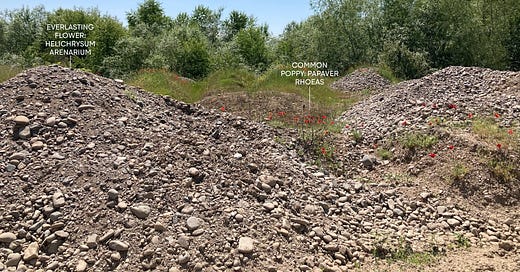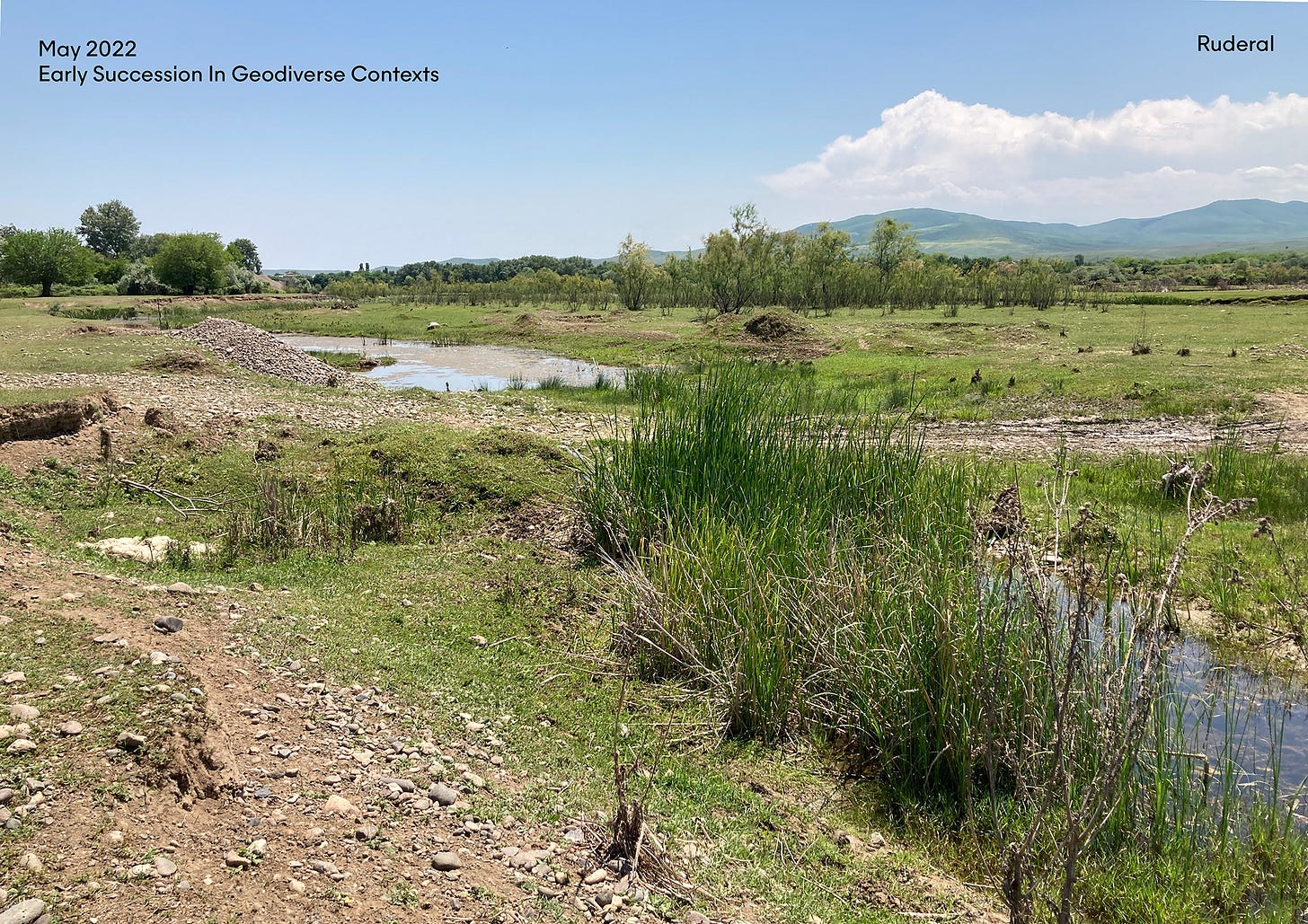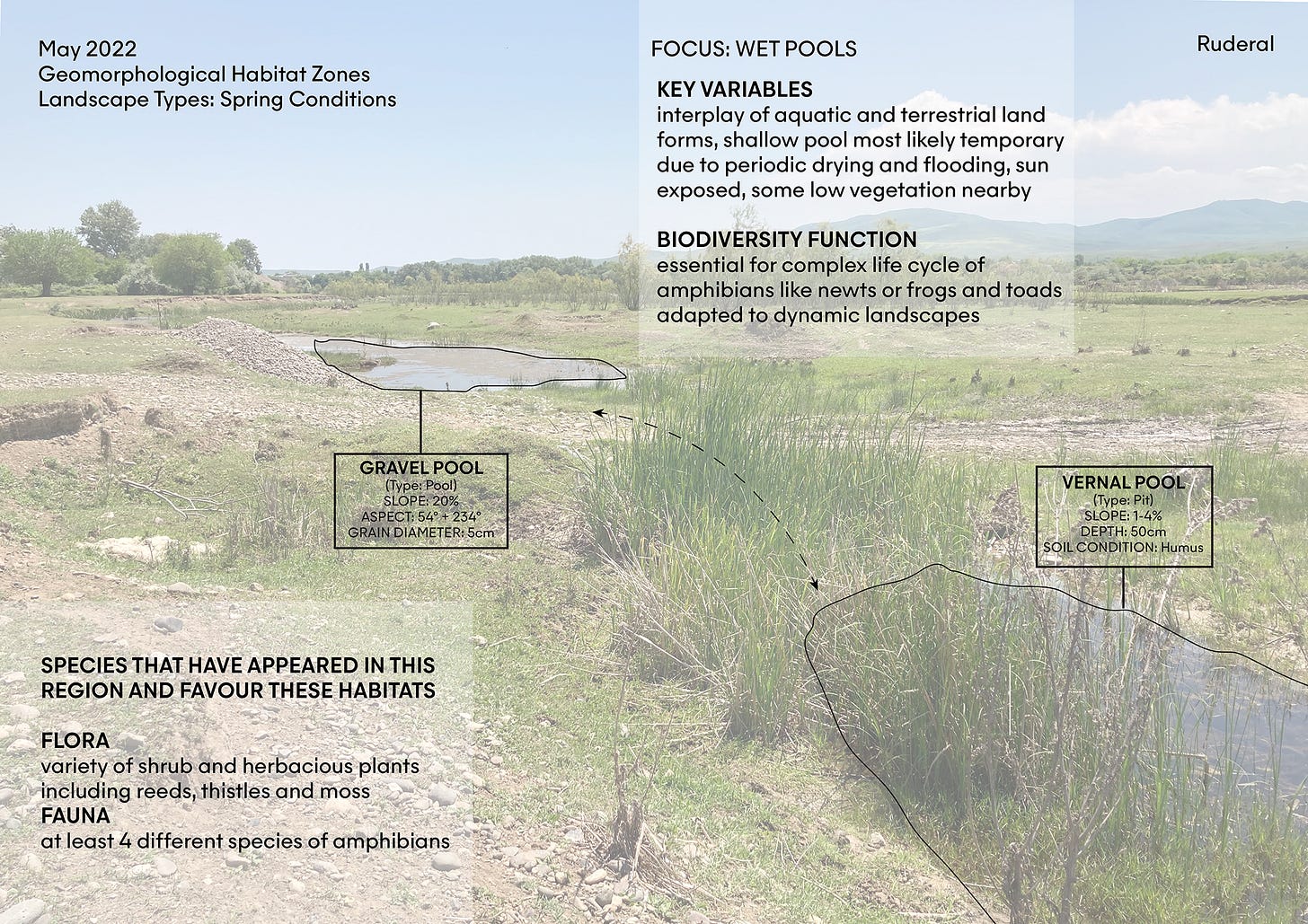The position and composition of spoil heaps changes significantly in a relatively short amount of time due to erosion and accumulation from flood, rain, wind, and anthropogenic disturbances. Still, a collection of spoil piles dumped over a couple of months will develop a range of diverse habitat conditions.
Fauna on the site have a greater, more deliberate radius of movement between bordering microhabitats. Amphibians, for example, favour complex mosaics of habitats to complete the various stages of their life cycles. As the diagrams depict, dry elevations like berms, spoil heaps and ridges are found in close proximity to wet habitats like shallow gravel and vernal pools, all of which provide feeding and breeding grounds for frogs and toads among other amphibians.
For reptiles, grassy areas provide hunting grounds while the various South- and North-facing aspects of spoil heaps allow reptiles like snakes and lizards to thermoregulate in both sunny and shady spots. Birds nesting in the intact bosque at the river edge also visit the quarry, indirectly yet significantly shaping the landscapes through their movement of food and nest building materials. Where conditions are suitable, droppings of seeds grow into saplings, then shrub and trees, gradually contributing to the accumulation of organic material and altering the topographic composition of the floodplains.
Diagrams developed by Marie Schega








